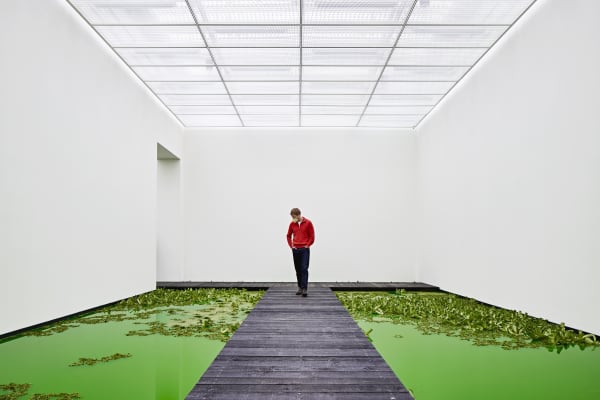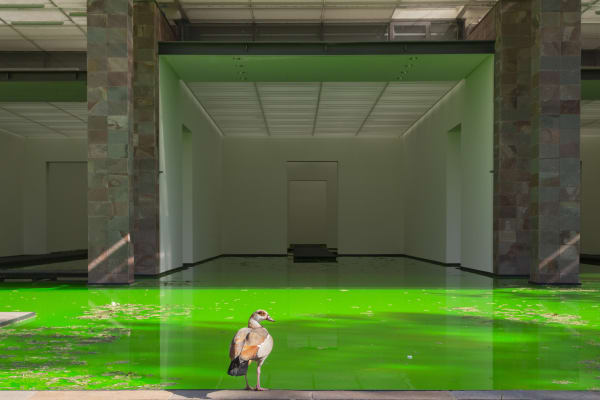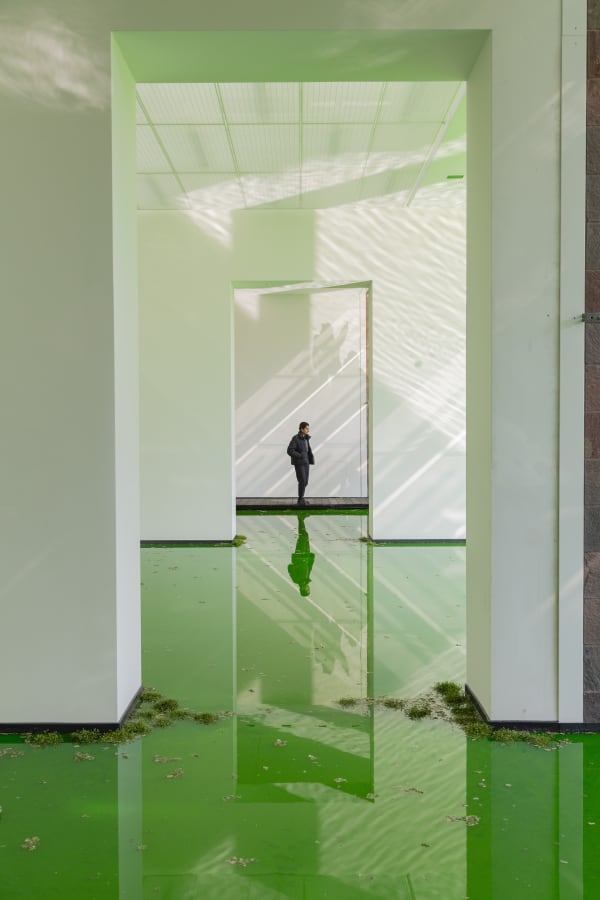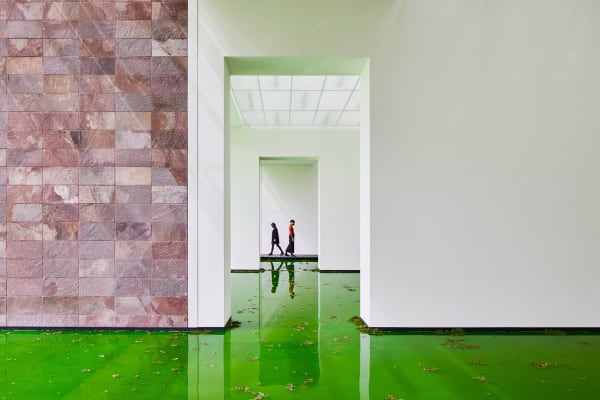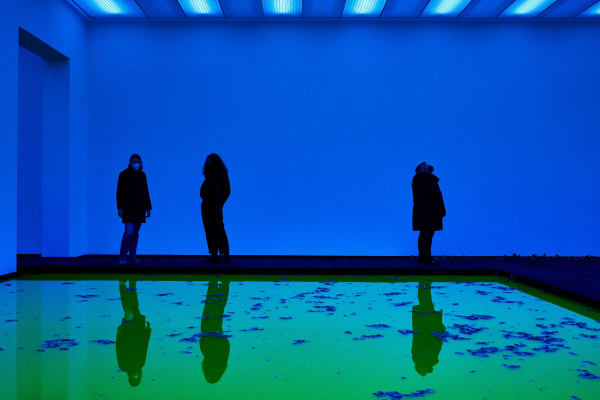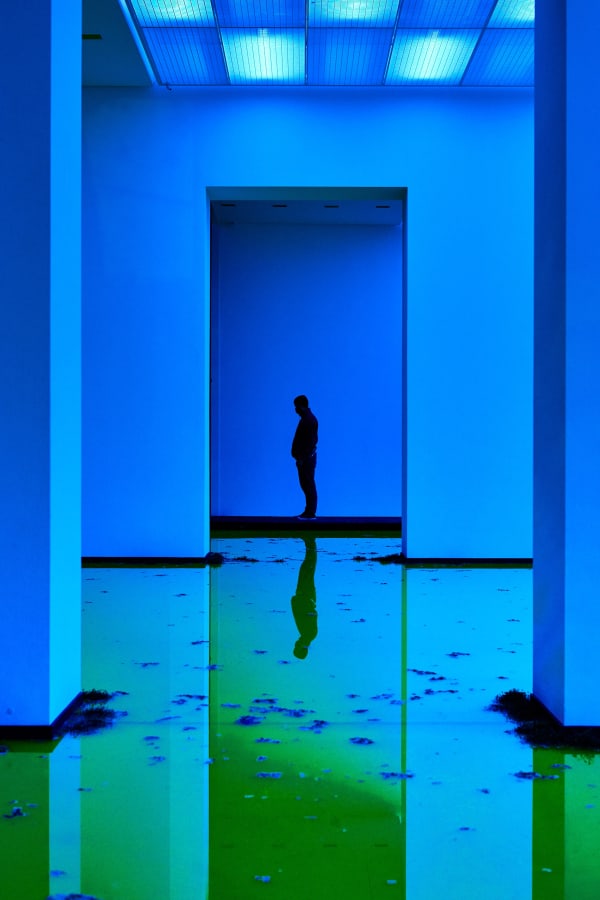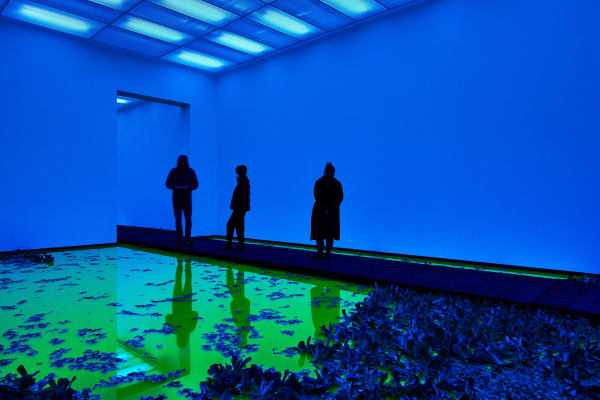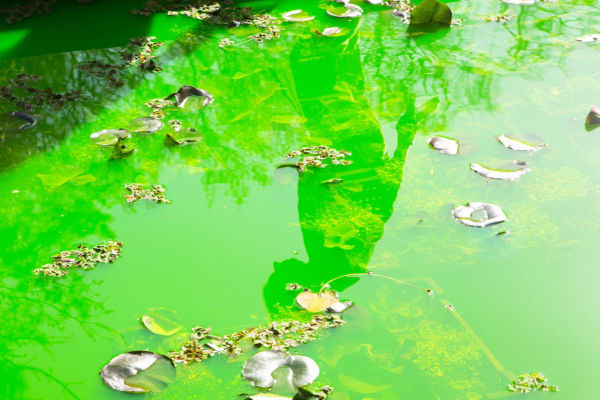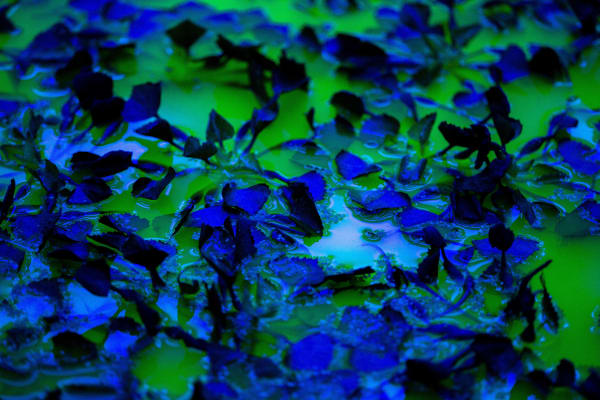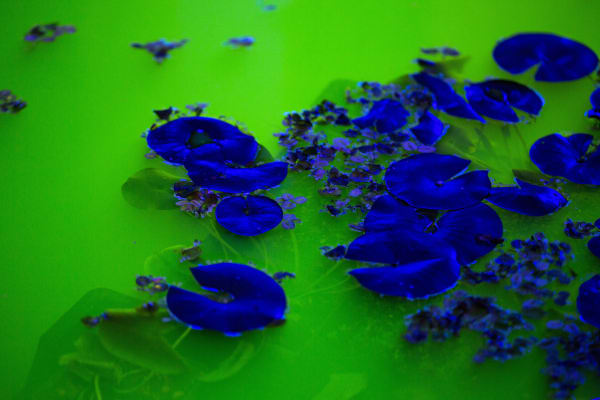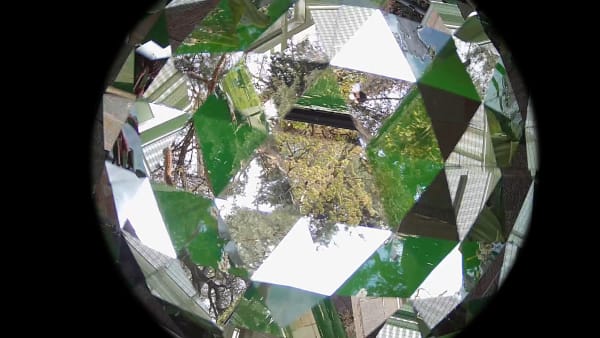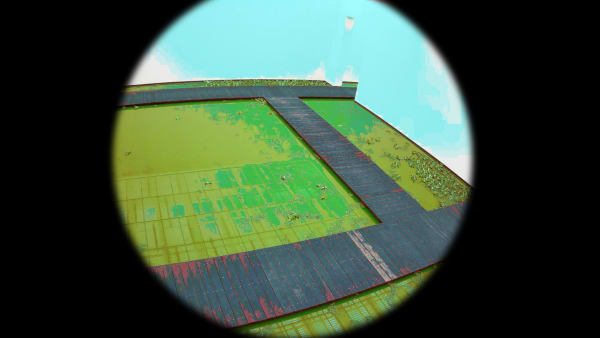Olafur Eliasson: Life: Fondation Beyeler, Basel
In recent years, I have increasingly grown interested in efforts to consider life not from a human-centric perspective but from a broad, biocentric perspective. I’ve found myself turning nouns into verbs – when I go through my exhibition, I try to tree, for instance – in order to become aware of perspec:ves that go beyond what we humans can properly imagine.
Life for humans, like all mammals, depends on inhaling and exhaling, on oxygen. Following the anthropologists Natasha Myers and Timothy Choy, I’d say that life is also about conspiring – playing on the origin of the word (‘to breathe with’) as well as the dictionary definition. We conspire with the tree, with others, and with the planet.
When we recognise that our lives are inextricably entangled with our surroundings and with structures and systems that extend far beyond our local context, we learn, I believe, that we are all vulnerable and not fully in control. We act and interact in situa:ons defined by uncertainty and unclear outcomes. In the words of anthropologist Anna L. Tsing: Precarity once seemed the fate of the less fortunate. Now it seems that all our lives are precarious – even when, for the moment, our pockets are lined.
Life, my artwork, and the Fondation Beyeler are entangled with the surrounding park, the urban landscape, and the planet, and they come to life through everything and everyone that meet up in it.
Ever since I began practising as an ar:st in the early 1990s, I have been interested in percep:on and in the cognitive and cultural conditions that shape it. Life comes to life through your active encounter with it, through your perception. I’ve chosen not to offer a didactic or explanatory text to accompany the artwork, as this might shape visitors’ perception and understanding of the exhibi:on. It’s important to me not to share a finite perspective on Life. Some of my thoughts on making the artwork and its continued life, as well as my sources of inspiration for the work, can be found here. At the same time, I welcome what visitors bring with them to the artwork, their expectations and memories, thoughts and emotions.
Life presents a model for a future landscape. It is hospitable. When Sam Keller, the Director of the Fondation Beyeler, and I first discussed the exhibition a couple of years ago, I thought, Why don’t we invite everyone to the show? Let’s invite the planet – plants and various species. Beyond just opening a door, I decided to remove the structural boundaries that keep the outside out of the institution, and I am grateful to the Fondation Beyeler and to the architect Renzo Piano, who built the museum, for trusting me to carefully – and caringly – have the glass façade removed from the building.
Together with the museum, I am giving up control over the artwork, so to speak, handing it over to human and non-human visitors, to plants, microorganisms, the weather, the climate – many of these elements that museums usually work very hard to keep out. Instead, we are trying to welcome everyone and everything in.
I’m interested in how we put our senses to use, in how we use our awareness. And what happens when we go numb? My good friend, the cognitive scientist and poet Pireeni Sundaralingam has done research into how digital environments are oaen constructed as aben:on capture systems that build up neurological stress and threat-based behavioural paberns. She argues that rich sensory environments and digital or physical spaces that host uncertainty, as opposed to threat, have a posi:ve impact in terms of brain development on growth, crea:vity, innova:on, and resilience. I hope that Life encourages visitors to experience themselves within an expanded – open, uncertain – landscape, as composite beings, caught up in larger, unruly ecologies.
Life offers human visitors the opportunity to activate their full sensorium. Through the smells of the plants and water, the sounds of the surroundings, the moisture in the air, visitors are always invited to use more than vision alone to explore the artwork. It invites ‘panoramic awareness’ within the landscape. It suggests that what is behind you, on either side of you, or above you is as important as what lies in front and ahead of you.
I’ve recently goben to know the anthropologist and dancer Natasha Myers, who invites us to – what she calls – ‘vegetalise’ our senses in order to grasp the potential of plant–people rela:ons. In an essay Myers asks: What do plants want? What do plants know? What can a plant do? We do not yet know. But you could reach toward them with the openness of not knowing, and forgeAng what you thought counts as knowledge.
While Life may give the impression that nature has taken over the Fondation Beyeler, it simultaneously also presents a profoundly sculpted experience. The bright green water, which takes up most of the space, is infused with uranine, a nontoxic dye used to study water flow. I’ve used it to make the presence of the water explicit.
The plants in Life – dwarf water lilies, shellflowers, water ferns, and more – were carefully selected by my good friend, the landscape architect Günther Vogt. Günther and I have collaborated on several artworks in the past that explored the perforated lines between nature and culture, acknowledging that we humans are part of larger systems.
I see Life as a naturalcultural landscape. Natureculture is a term coined by feminist, scien:st, and author Donna Haraway, and I think we’re at a point where we’re finally realising that culture and nature are inseparable – in fact, they always were. In my part of the world, we used to think that we humans were excep:onal – success was achieved when we placed ourselves above nature, in a role of power, using and shaping Earth to our liking. Now we have to work through the fact that we’re a lible less exceptional than we thought. We must make space for others.
I’d like to suggest that our sense of time passing is also part of the artwork. I think there’s some potential in ‘unlocking time’ from standardised units of measurement, to understand the time it takes to encounter the artwork and be fully enmeshed in it as a lived, felt sense of time, inseparable from one’s experience.
Neurobiologist Anna Wirz-Justice has done incredible research into the science of biological time, of our daily rhythms – the so-called circadian rhythms – and into how these rhythms govern human behaviour and physiology. But they also impact most other living organisms – from the smallest bacteria, fungi, and plants to flies and fish and mammals – as they have all internalised these external, geophysical rhythms and have a remarkably similar set of ‘clock genes’ that generate an internal cycle of about twenty-four hours.
Life is not bound by a human sense of time; it does not have fixed opening or closing dates. Instead, it slowly started emerging in April and will fade away in July. In this way, the construction and deconstruction of Life become integral parts of the artwork and can be observed by visitors from the park surrounding the Fondation Beyeler.
Life is in continuous transforma:on. Humans and non-humans alike can experience these changes at any time of day or night, for there are no opening or closing hours for the exhibition. Even if no human visitors are in the space, other beings – insects, bats, or birds, for instance – can fly through or take up temporary abode within it. At night, Life glows – you can go see for yourself.
I’ve always felt that art has agency – not as an intrinsic value or essential core but as beingin-and-with-the-world – just like the visitor has agency in meeting up with the artwork. They’re both situated somewhere, in a world – the agencies and trajectories of the artwork and of the visitor are part of larger networks. The question, then, is what happens in that meeting up of artwork, visitor, and the world when their journeys intertwine? Does the artwork move the visitor? Do visitors move the artwork into their ‘now’ – the moment and world in which the encounter takes place? And what if the visitor is a non-human being – a butterfly, for instance, taking a detour from its journey through the Beyeler park? I think all can potentially move and be moved.
I invite you to explore the exhibition for yourself. If you are unable to travel to the Fondation Beyeler in person, you can visit www.olafureliasson.net/life at any time of day or night to see the exhibition live from alternating human and nonhuman perspectives. The microsite that accompanies the exhibition,
www.life.fondationbeyeler.ch, collects a growing resource of materials that have inspired the exhibition, including a series of conversations I had with Dr. Prof. Em. Anna Wirz-Justice, Prof. Günther Vogt, Sam Keller and Pireeni Sundaralingam. I am indebted to them for sharing their knowledge with me in these conversations, which were critical in shaping this artwork. As I consider their perspectives to be fascinating and important, I have asked them to be available for interviews about their own work, and they have kindly agreed to do so. To arrange to speak to them, please write to Dorothee Dines at presse@fondationbeyeler.ch.


